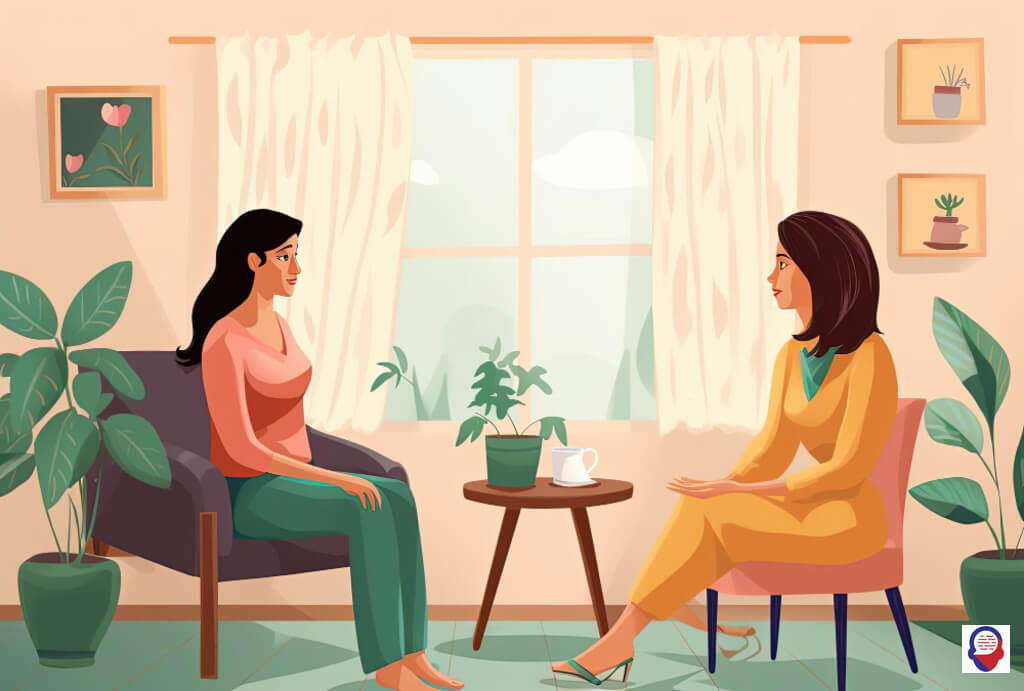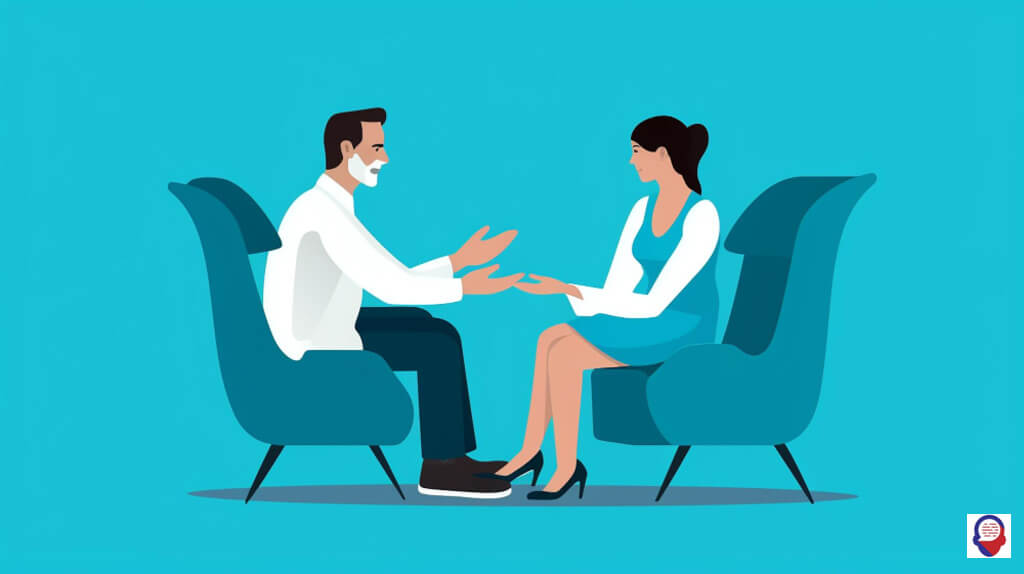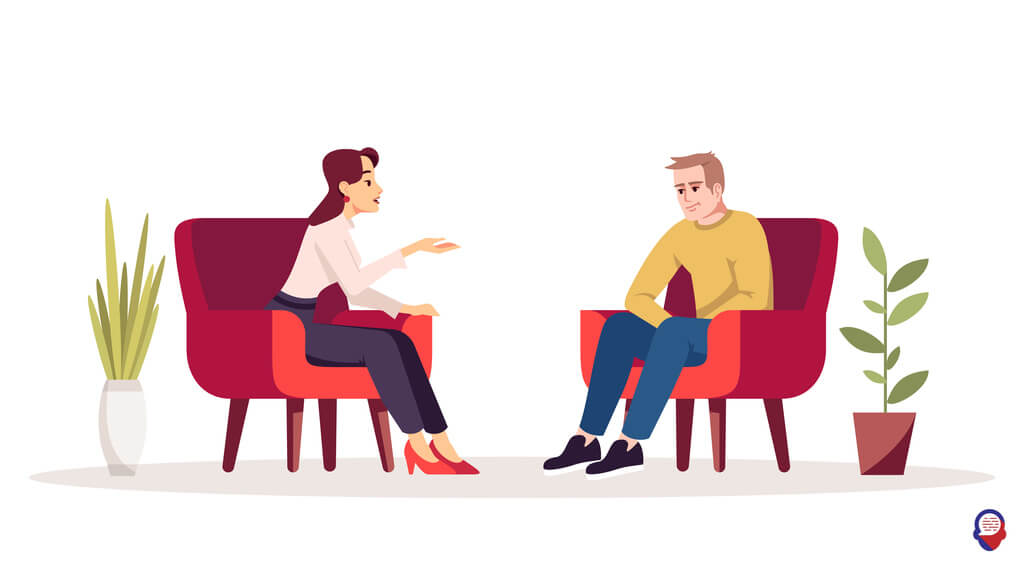Conquer Your Fears: The Behavioural Path to Freedom
A phobia is more than just a simple fear. It’s a powerful, persistent, and often overwhelming dread of an object, situation, or activity that is, in reality, largely harmless. This intense anxiety can feel like a prison, dictating where you go, what you do, and how you live your life. But what if you could teach your brain a new way to respond? What if you could systematically dismantle that fear, brick by brick, until it no longer holds power over you? This is the core promise of the behavioural approach to treating phobias, a practical and profoundly effective path toward reclaiming your freedom.
This approach doesn’t get lost in the abstract. Instead, it focuses on the tangible, the observable, the doing. It operates on a simple yet revolutionary principle: phobias are learned behaviours. And anything that has been learned can, with the right techniques and guidance, be unlearned. It’s a journey of action, of facing fears in a controlled and supportive way, and of proving to yourself, through direct experience, that you are stronger than what you dread.

What Is a Behavioural Approach to Phobias?
A behavioural approach to treating phobias is a type of psychotherapy that focuses on changing maladaptive behaviours. Instead of delving deep into the potential unconscious reasons for your fear, this method targets the fear response itself, aiming to replace the cycle of anxiety and avoidance with one of calm and confidence.
At its heart, this approach views a phobia as a conditioned response. Your brain has learned to associate something specific, like spiders, heights, or public speaking, with intense danger and panic. The goal of behavioural therapy is to break this association. It uses structured, real-world exercises to help you gradually unlearn the fear, proving to your nervous system that the phobic stimulus is not a genuine threat.
This practical, hands-on methodology empowers you to take an active role in your recovery. It provides you with concrete tools and strategies to manage anxiety and systematically reduce your avoidance behaviours. The focus is less on talking about the fear and more on actively confronting it in a safe, structured, and scientifically-backed manner.

How Are Phobias Learned in the First Place?
Phobias are typically learned through a process known as conditioning. The most common explanation is classical conditioning, where a neutral object or situation becomes associated with a frightening event. For instance, if a child is startled by a loud, barking dog, their brain might create a powerful link between the sight of any dog and the feeling of intense fear, even if subsequent dogs are perfectly friendly.
This initial fear is then often maintained and strengthened by another process called operant conditioning. This occurs when your behaviour is reinforced by its consequences. When you feel anxious about your phobia, you naturally avoid the trigger. Avoiding a dog, a lift, or a social gathering provides immediate relief from anxiety, which feels good.
This relief acts as a powerful reward, reinforcing the avoidance behaviour. Your brain learns that avoiding the feared object is the key to feeling safe. Over time, this creates a vicious cycle where the avoidance makes the phobia stronger, because you never give yourself the chance to learn that the thing you fear might not be dangerous after all.

What Are the Key Behavioural Therapies for Phobias?
Several key therapies form the foundation of the behavioural approach, all centred on the principle of exposure. These methods are designed to help you confront your fears in a controlled, therapeutic setting, allowing your brain to relearn its response to the phobic trigger.
These techniques are not about throwing you in at the deep end without support. They are carefully structured, evidence-based procedures guided by a trained professional. The primary goal is always to build your confidence and coping skills, step by step, until the fear no longer controls your actions or your life. Each method offers a slightly different path to the same destination: freedom from fear.

What Is Systematic Desensitisation?
Systematic desensitisation is a gradual, step-by-step process designed to gently replace a fear response with a relaxation response. It is one of the most widely used and effective behavioural treatments for specific phobias, breaking the process of facing your fear down into manageable steps.
The therapy works through a principle called counter-conditioning. You simply cannot be anxious and relaxed at the same time. By pairing the phobic stimulus with a state of deep relaxation, you gradually weaken the old association with fear and build a new one with calm. It’s a slow, steady, and empowering method that puts you in complete control of the pace.
The process typically involves three distinct stages. First, your therapist teaches you powerful relaxation and breathing techniques. These are your tools, the skills you will use to manage any anxiety that arises during the process. You’ll practice these until you can induce a state of calm on command.
Next, you and your therapist will work together to create a "fear hierarchy". This is a list of situations involving your phobia, ranked from the least frightening to the most terrifying. For someone with a fear of flying, the bottom of the list might be looking at a picture of a plane, while the top might be taking a long-haul flight.
Finally, the desensitisation begins. While in a deeply relaxed state, you will start at the very bottom of your hierarchy. You will be asked to imagine or look at the least scary item on your list. You will stay with that image until any anxiety subsides and you feel completely calm. Only then will you move up to the next item on the list, repeating the process of pairing the stimulus with relaxation until you can confront it without fear.
This gradual progression ensures you are never overwhelmed. You build confidence and mastery at each stage before moving to the next, more challenging one. Over time, you work your way up the entire hierarchy, systematically dismantling the phobia until you can face the ultimate fear with a newfound sense of control and calm.

How Does Flooding Therapy Work?
Flooding therapy is a more intense form of exposure therapy that involves direct and prolonged confrontation with the phobic object or situation. Unlike the gradual approach of systematic desensitisation, flooding places you directly in the presence of your fear trigger in a safe and controlled environment until your anxiety naturally subsides.
The principle behind flooding is that the body’s acute fear response, the "fight or flight" rush of adrenaline, cannot be sustained indefinitely. It is physiologically impossible to remain in a peak state of panic for a prolonged period. By remaining in the feared situation, you experience the peak of your anxiety, followed by its natural decline.
During a flooding session, a therapist would ensure the environment is completely safe before exposing you to the phobic stimulus. For example, someone with a phobia of germs might be asked to hold something they perceive as contaminated for an extended period, without being allowed to wash their hands. The therapist remains with you throughout, providing support and ensuring the exposure continues until the fear response is exhausted.
When you stay in the situation long enough for the anxiety to fade on its own, your brain learns a crucial lesson. It learns that the feared catastrophe did not happen. The intense panic did not last forever, and you survived. This direct, experiential learning can rapidly extinguish the phobia, as the old, fearful association is replaced by the new reality of safety.
It is critical to understand that flooding must only ever be undertaken with the guidance of a qualified mental health professional. Attempting this technique on your own can be traumatic and may even worsen the phobia. When conducted properly, however, it can be a very powerful and fast-acting treatment for some individuals.

What Is Exposure and Response Prevention (ERP)?
Exposure and Response Prevention, or ERP, is a highly effective therapy that directly targets the behaviours that maintain a phobia. It involves two key components: exposing yourself to the thoughts, objects, or situations that trigger your anxiety (Exposure), and then making a conscious choice not to engage in your usual safety or avoidance behaviour (Response Prevention).
The "exposure" part is similar to other behavioural techniques. You systematically confront the things you fear. The "response prevention" part is what makes ERP unique and so powerful. It focuses on breaking the cycle of compulsive or avoidant behaviours that you use to reduce your anxiety in the short term.
For example, if you have a phobia of contamination, your typical response after touching a doorknob might be to wash your hands immediately. In ERP, you would be guided to touch the doorknob (exposure) and then resist the overwhelming urge to wash your hands (response prevention). This is where the real therapeutic work happens.
By preventing the safety behaviour, you allow your anxiety to rise and then naturally fall on its own. This teaches your brain that you can tolerate the discomfort and that your feared outcome, like getting sick, doesn’t actually occur. You learn that your safety rituals are not what is keeping you safe, they are what is keeping you trapped.
This process is challenging, but it directly dismantles the engine of the phobia. Each time you successfully complete an ERP exercise, you weaken the connection between the trigger and the compulsive response. You build tolerance for uncertainty and gain immense confidence in your ability to manage anxiety without resorting to the rituals that have been controlling your life.

What Role Does Modelling Play in Treatment?
Modelling, sometimes called observational learning, is a therapeutic technique where you learn by watching someone else interact safely and calmly with your phobic stimulus. It is based on the powerful psychological principle that we can learn new behaviours and overcome fears by observing the experiences of others.
This approach is often used in conjunction with other exposure therapies like systematic desensitisation. A therapist might demonstrate the desired behaviour first to show you that it is safe and manageable. Seeing a trusted professional handle a spider, pet a dog, or stand on a balcony without any fear provides powerful evidence that contradicts your own anxious beliefs.
Modelling works in a few ways. Firstly, it reduces your fear by showing you that the feared negative consequences do not happen. This vicarious experience helps to challenge your catastrophic thinking. Secondly, it provides you with a clear blueprint for how to behave in the feared situation, giving you a concrete strategy to copy.
For some, observing another person successfully navigate their fear can be the crucial first step that gives them the confidence to try it themselves. It can be particularly helpful for children with phobias, who learn a great deal by watching and imitating their parents or therapists. The process shows that an alternative, non-anxious response is possible, paving the way for your own direct exposure work.

Why Is This Approach So Effective?
The behavioural approach is so effective because it directly targets the root mechanism of the phobia, the learned association between a trigger and a fear response. It doesn’t just talk about the fear, it actively works to rewire the brain’s reaction through direct, real-world experience.
The core of its success lies in a process called habituation. When you are repeatedly exposed to a stimulus without any negative consequences, your nervous system gradually gets used to it. The initial alarm bells stop ringing so loudly. Your brain learns, on a deep and primal level, that this thing you once perceived as a mortal threat is actually benign.
Furthermore, this approach systematically dismantles avoidance, which is the fuel that keeps a phobia alive. By preventing avoidance and safety behaviours, you rob the phobia of its power. You prove to yourself that you can handle the anxiety and that the catastrophic outcomes you dread do not materialise. This builds profound self-efficacy, a belief in your own ability to cope.
This process provides undeniable, concrete evidence that your fears are unfounded. It’s one thing to be told a spider won’t hurt you, it’s another thing entirely to hold one in your hand and experience that truth directly. This experiential learning is far more powerful than simple reassurance, creating lasting change in your brain’s neural pathways.

Is a Behavioural Approach Right for Everyone?
A behavioural approach is considered the gold standard treatment for specific phobias, such as fear of animals, needles, heights, or flying, because of its high success rates. It is a practical, goal-oriented therapy that provides clear, measurable results, which many people find incredibly motivating.
However, its suitability can depend on the individual and the nature of their anxiety. The active, confrontational nature of exposure therapy requires a high level of commitment and a willingness to experience short-term discomfort for long-term gain. It can be challenging, and it’s essential that you feel ready to engage in the process.
For more complex anxiety conditions, such as social anxiety or agoraphobia, a purely behavioural approach might be combined with other techniques. Cognitive Behavioural Therapy (CBT), for example, integrates these behavioural methods with cognitive strategies that help you identify and challenge the negative thought patterns that underpin the fear.
Ultimately, the best way to determine if this approach is right for you is to have a thorough assessment with a qualified mental health professional. They can help you understand the root of your phobia, discuss the different treatment options, and collaborate with you to create a personalised plan that feels both challenging and achievable.

What Should You Expect During Therapy?
Embarking on behavioural therapy for a phobia is a structured and collaborative process. Your journey will begin with an initial assessment where your therapist will seek to understand the history of your phobia, how it affects your daily life, and what you hope to achieve through treatment.
This first phase is all about building a strong, trusting therapeutic alliance. You need to feel safe and understood by your therapist. Together, you will set clear, realistic, and meaningful goals. This isn’t just about "curing" the phobia, it’s about defining what freedom from that phobia would look like for you, whether it’s being able to take your children to the zoo or accepting a promotion that requires air travel.
Next, you will move into the psychoeducation phase. Your therapist will explain the model of how phobias are maintained and introduce you to the specific techniques you will be using. You will likely learn and practice relaxation skills, like deep breathing or progressive muscle relaxation, which will serve as your anchor during the more challenging exposure work.
The main body of the therapy will involve the gradual exposure exercises you planned together. Your therapist will guide and support you at every step, ensuring you are moving at a pace that is right for you. They will help you process your experiences, celebrate your successes, and troubleshoot any difficulties, constantly reinforcing your growing sense of mastery and confidence. The process is transparent, collaborative, and empowering from start to finish.
Frequently Asked Questions

How long does behavioural therapy for phobias take?
The duration of therapy can vary significantly depending on the severity of the phobia and the individual’s pace. For a straightforward, specific phobia, significant progress can often be made in just 8 to 12 sessions. More complex phobias or those co-occurring with other anxiety issues may require a longer course of treatment.

Is it possible to do this therapy online?
Yes, many behavioural therapies, especially those involving exposure, can be adapted effectively for online or telehealth delivery. A therapist can guide you through imagined exposure, show you videos, or coach you through real-life exposure tasks in your own environment via video call. This has made treatment more accessible for many people.

Will the phobia come back after treatment?
Behavioural therapy has a very good long-term success rate because it teaches you lifelong skills. While it’s possible to experience a minor return of fear, especially during times of high stress, you will now have the tools and the confidence to manage it effectively. Most people find the changes are permanent because they have fundamentally unlearned the fear response.

Is medication ever used with behavioural therapy?
Sometimes, medication can be used as an adjunct to behavioural therapy, but it is not a first-line treatment for specific phobias. In some cases, anti-anxiety medication might be prescribed to help an individual manage initial high levels of anxiety, making them better able to engage in exposure therapy. However, the ultimate goal is to overcome the fear without reliance on medication.
At Counselling-uk, we understand that taking the first step to confront a phobia is the hardest part of the journey. We are here to provide a safe, confidential, and professional space where you can find the expert advice and support you need. Our dedicated therapists are trained in evidence-based behavioural approaches to help you overcome the fears that limit your life. You don’t have to face this challenge alone. Reach out today, and let us help you find your path to freedom.




Cognitive-behavioural therapy (CBT) is another popular form of behaviour therapy that combines cognitive techniques such as thought challenging with behaviour techniques such as systematic desensitization or flooding. The purpose is to help people learn how to manage their thoughts and emotions so that they can better cope with their fears and phobias.